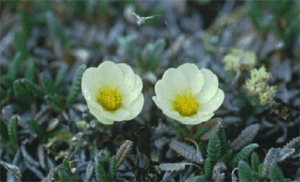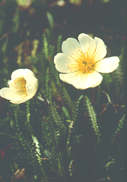As an undergraduate student I had the good fortune to join the Systems Ecology Research Group at San Diego State University for two summers of research at Eagle Creek, Alaska. There, I met and worked closely with Drs. Phil Miller (SDSU), Terry Chapin (University of Alaska), Ned Fetcher (University of Scranton), Gus Shaver (Woods Hole, Ecosystems Center), and several other professors, postdoctoral research associates and graduate students. With this experience, I became very familiar with the arctic tundra and wanted to do graduate work there.
When I joined the Department of Botany graduate program at Duke, support by joint NSF and James B. Duke graduate fellowships allowed me to pursue independent research in Alaska under the guidance of two eminent scholars and leaders in their respective fields: Boyd R. Strain, a physiological ecologist, and Janis Antonovics, an ecological geneticist. Their joint mentorship of my research allowed me to develop what at the time was a rather unusual cross-disciplinary project incorporating ecological genetics, demography, and physiological ecology. In my first two years in the tundra, I had observed marked phenotypic differentiation among populations in several tundra species. I chose to study the physiological and demographic underpinnings of the distribution of these genetically-distinct populations, or ‘ecotypes’.
 |
 |
| Dryas octopetala ssp. octopetala. This is the fellfield ecotype in flower. This ecotype is widespread across barren, rocky, windswept arctic tundra environments from Alaska to Siberia and northern Europe. | Dryas octopetala ssp. alaskensis. This snowbed ecotype evolved in Alaska, and is found in relatively protected sites. |
The remarkable differences in physiology, growth, and life history characteristics between adjacent populations were shown to be the result of strong, consistent natural selection in favor of larger, more competitive plants in the more nutrient-rich snowbed environment, and smaller, more stress-tolerant plants in the windblown ridgetop environment. Photosynthetic response to the environment was the opposite from that expected if photosynthetic capacity was the primary character of importance to selection. Instead, ecotypic differentiation was achieved largely through evolution of greater plasticity in the snowbed population. The morphological response to the environment resulted in long-term differential growth and reproduction of the two ecotypes when reciprocally transplanted. The two ecotypes were experimentally shown to belong to the same species as they were completely interfertile and intermediates (apparently hybrids) survived well in intermediate environments. A most remarkable aspect of this differentiation was that it was maintained over a distance of only a few meters and it was manifested in plants that easily live several hundred years. All of this evidence served to illustrate the strength of natural selection that remains active today to maintain genetic distinctions between populations. The dissertation was eventually published as a total of six articles in refereed journals under the general heading of "Experimental Ecology of Dryas octopetala ecotypes:". The work has been cited in textbooks and review papers as a classic example of ecotypic differentiation in plants.
I am planning to return to Eagle Creek to re-census the reciprocal transplant gardens after 30 years in July, 2009!